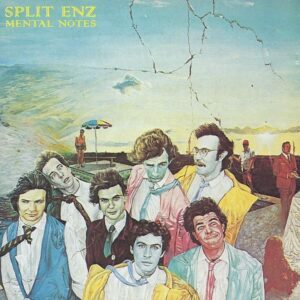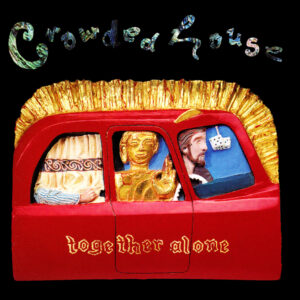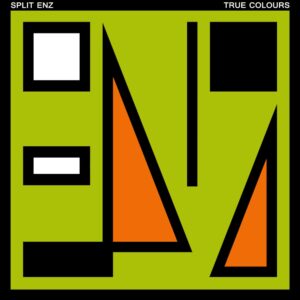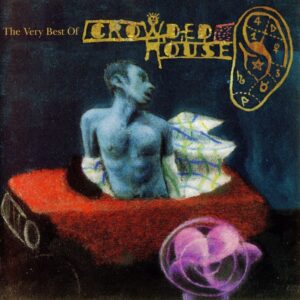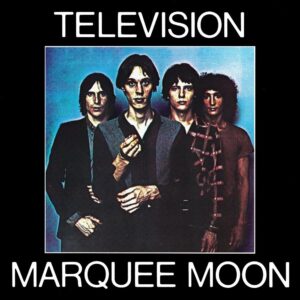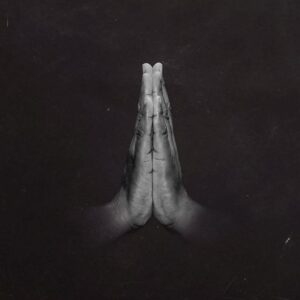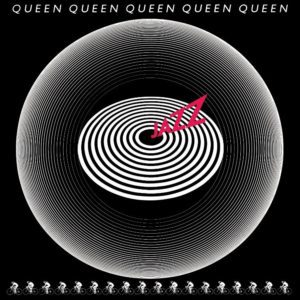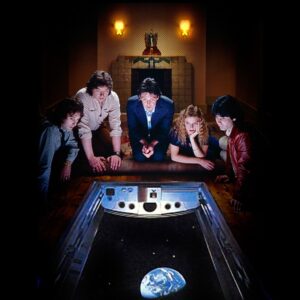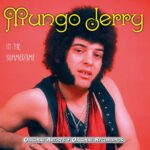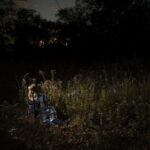
I’ve already covered the Split Enz and Crowded House catalogues separately – this page covers Neil and Tim Finn’s solo albums and duo projects. I’ve only covered a handful of Tim’s solo albums, but I’ve written about most of Neil’s solo projects excluding his collaborative Seven Worlds Collide releases. I haven’t been particularly impressed by the Finns’ work in the first decade of the 21st century, but some of Neil’s work in the 2010s has been very enjoyable. 1995’s Finn is one my favourite of the albums that the Finn brothers have been involved with outside of Split Enz and Crowded House, and it’s well worth hearing.
The Finn Brothers: Finn | Everyone Is Here
Neil Finn: Try Whistling This | One Nil | Pajama Club | Dizzy Heights | Out of Silence
Tim Finn (20th century albums): Escapade | Big Canoe | Tim Finn | Before & After | Say It Is So
The Finn Brothers
Finn
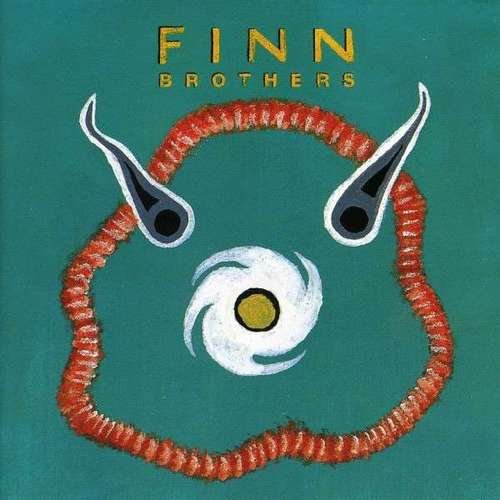
1995, 8/10
Tim and Neil Finn joined forces in 1995 to record the low-key Finnalbum. The brothers play the bulk of the instruments, with the only outside musicians Dave Dobbyn, who contributes a meaty bass lines to ‘Kiss The Road of Rarotonga’, and the Avarua Presbyterian Choir who contribute backing vocals to ‘Paradise’. As demonstrated on the collaborative tracks on Woodface, the Finn’s lyrics become more cryptic and less personal when they write together; Neil and Tim’s joint lyrics abound with surreal in-jokes: “Feeling just a little surprised/Like you discovered Engelbert Humperdink or something/Inside the fairy light.
Because most of the instrumental parts are straightforward and low-key, the focus is often directed onto the song writing. Apart from the staid, tuneless ‘Bullets in My Hairdo’, the melodies on Finn are lovely. ‘Last Day of June’ may be the most beautiful song Neil has written, and its low-key arrangement amplifies its fragility. ‘Angels Heap’, a lovely nostalgic ode to a vintage car, spotlights a similarly enchanting melody. When the Finns undertake fuller bodied arrangements on ‘Suffer Never’ and ‘Kiss the Road of Rarotonga’, they also sound fantastic.
While it’s purposefully low key, Finn delivers some of the brothers’ most solid songwriting, and I’m not sure either of the Finns have made a better album since.
Everyone Is Here
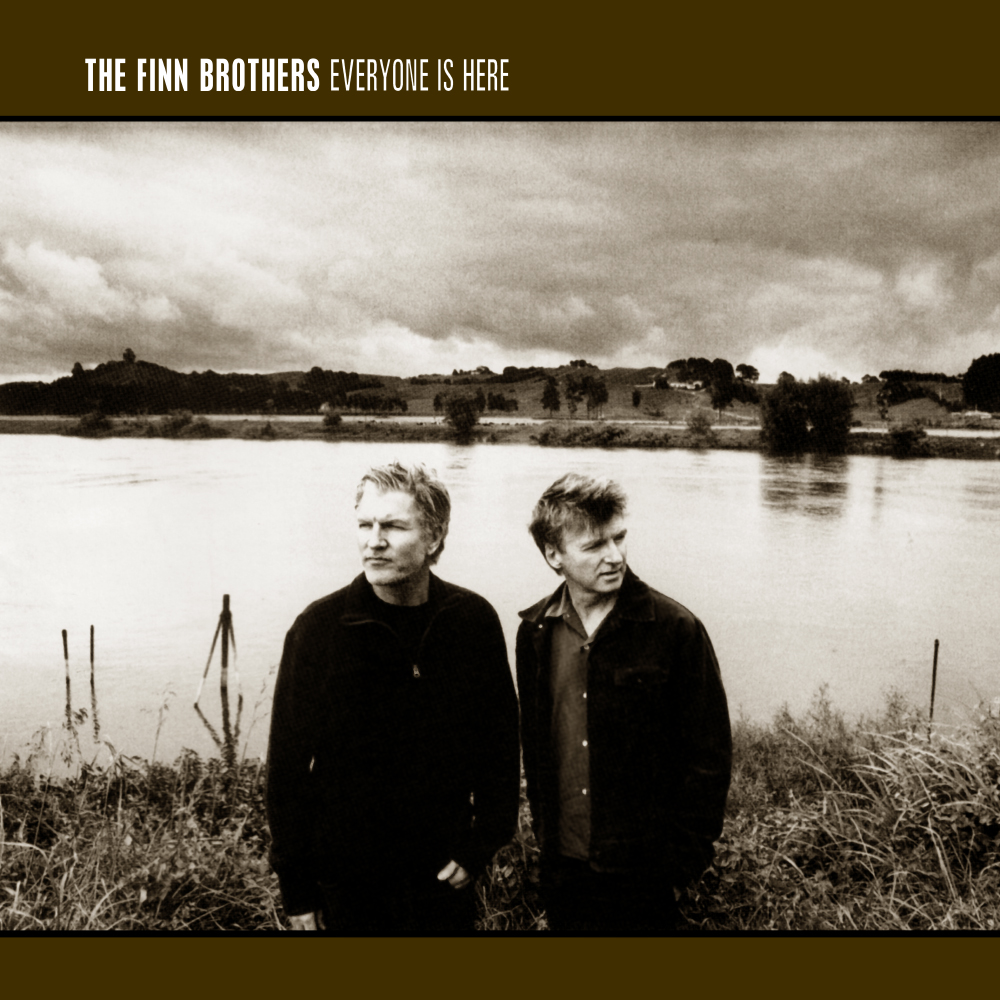
2004, 5.5/10
The Finn Brothers’ first album as a duo was stripped down, with an off-the-cuff flavour, but Everyone Is Here is the opposite, with a smooth radio friendly sound. Everyone Is Here was originally completed with Tony Visconti as producer, before being scrapped and rerecorded with Mitchell Froom. It’s unfair to complain too much given that the brothers have an established style and it’s a solid showcase of what they do best, but Everyone Is Here is too safe and mannered despite some excellent songs.
This impression isn’t helped by the lyrics, often based around the themes of ageing, which help to take even more of an edge off. It’s the gentlest songs that make the biggest impression; ‘Edible Flowers’, which originally surfaced on Neil’s Seven Worlds Collide live album, uses his vulnerable upper register, ‘Disembodied Voices’ is delicate and pretty, while ‘Gentle Hum’ is an excellent atmospheric piano-driven closer. They’re still able to channel energy successfully into some of the upbeat material like the single ‘Won’t Give In’, ‘Part Of Me, Part Of You’ and ‘Nothing Wrong With You’, which showcase some surprisingly energetic harmonies, which do help to add some character to a record that occasionally teeters toward nostalgic blandness.
Everyone Is Here is a workmanlike record that satisfies the Finns’ fan-base without setting the world alight.
Neil Finn
Neil Finn’s early solo albums were disappointing after his excellent work in Crowded House, but he’s made some strong solo records in the 2010s.
Try Whistling This
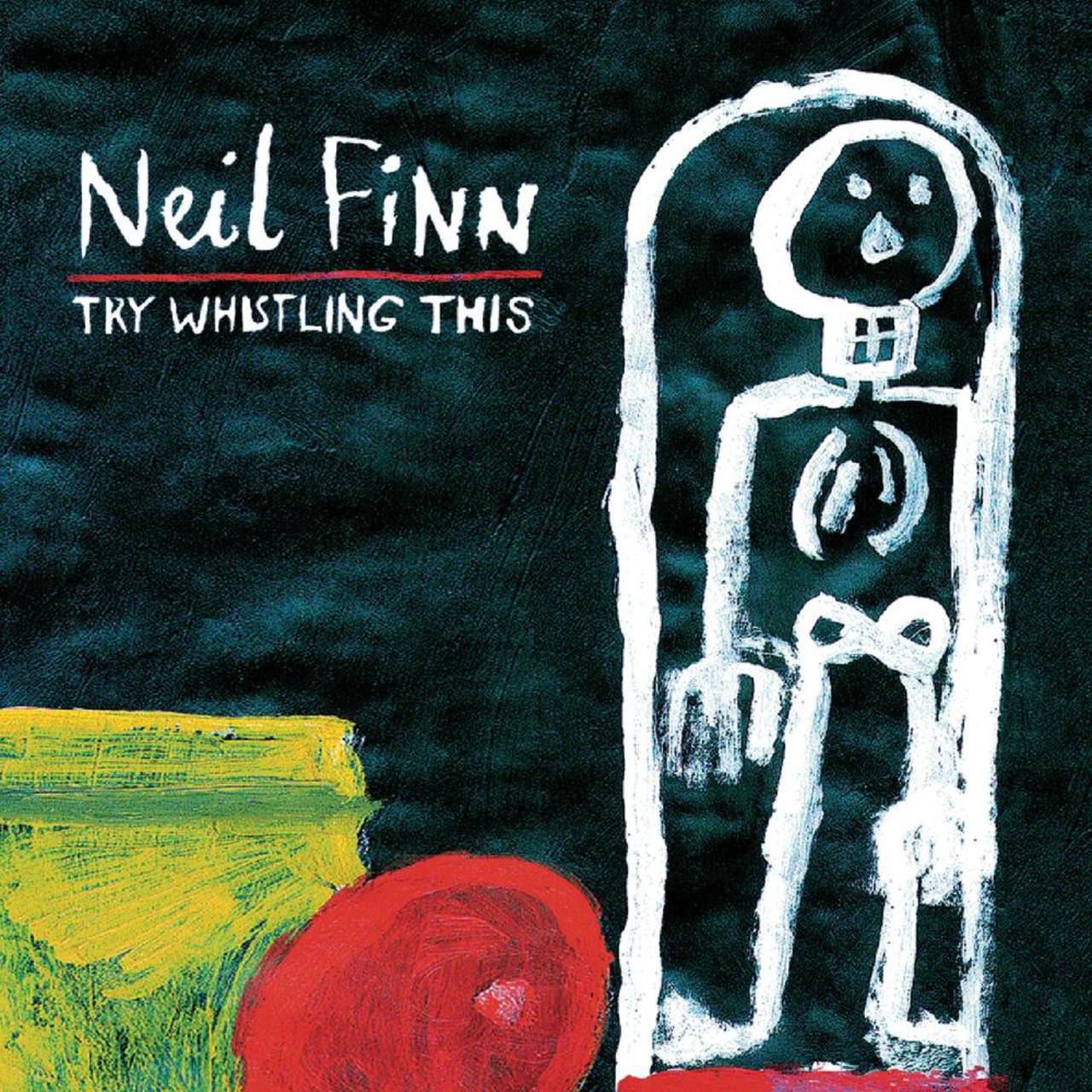
1998, 6.5/10
For his first solo record, Try Whistling This, Neil Finn made an intentional effort to distance himself from Crowded House – the title challengers listeners to find catchy tunes. He dabbles with new textures, and with its programming it’s very much a record of the late 1990s. Collaborators include producer Marius De Vries and Midnight Oil guitarist Jim Moginie. I remember being disappointed with Try Whistling This at the time of release, and it’s underwhelming coming off the heels of the excellent Together Alone and Finn. But at the same time it’s a valiant attempt to stake out some new territory. In hindight, the album’s main issue is simply that it’s too long; the last four songs drag with their languid, spacey arrangements; for its first nine tracks Try Whistling This is much stronger.
The first single ‘She Will Have Her Way’ is confusingly unrepresentative – it’s straight up power pop which could have come from True Colours or Crowded House, without a hint of experimentation. Despite some sonic candy, the gorgeous ‘Sinner’ is essentially a pretty piano ballad, while the rockers like ‘Souvenir’, ‘Twisty Bass’ and ‘Loose Tongue’ benefit from their electronic arrangements.
Try Whistling This is a bold experiment with some great tracks – it just needed some trimming.
One Nil
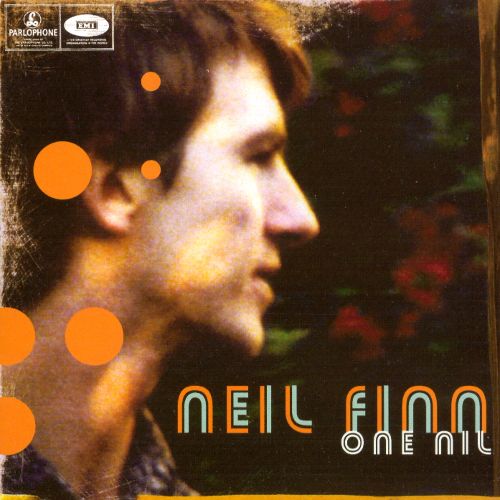
2001, 7.5/10
After the more experimental Try Whistling This, One Nil reverts to the guitar based approach of Crowded House, even though it’s more personal and subtle. Unexpected support comes from former Prince collaborators Wendy and Lisa, who add a slightly funky edge to songs like ‘Rest Of The Day Off’ and ‘Hole In The Ice’; it’s not as an extreme juxtaposition as it sounds on paper, and these songs dovetail into the rest of the album nicely.
One Nil is consistently full of modest, well crafted efforts like the charming melodic ‘Wherever You Are’ and ‘Last To Know’, with its gentle verse and climactic chorus, There are plenty of accessible and emotional pop tunes like ‘Turn and Run’ and ‘Anytime’, while ‘Into The Sunset’ ends the album on a gorgeous note with its beautiful coda.
There’s hardly anything trail blazing or instantly catchy about this record, but it’s eminently likeable; if you’re already a fan of Finn’s melodic and thoughtful pop, it’s hard to go too far wrong with One Nil. There was also a revised version of the album for the American market titled One All, which supplants a couple of the weaker songs (the awkward rocker ‘Don’t Ask Why’ and the interesting and atmospheric ‘Elastic Heart’) with a couple of new tracks, as well as some re-sequencing and re-mixing.
Pajama Club (by Pajama Club)
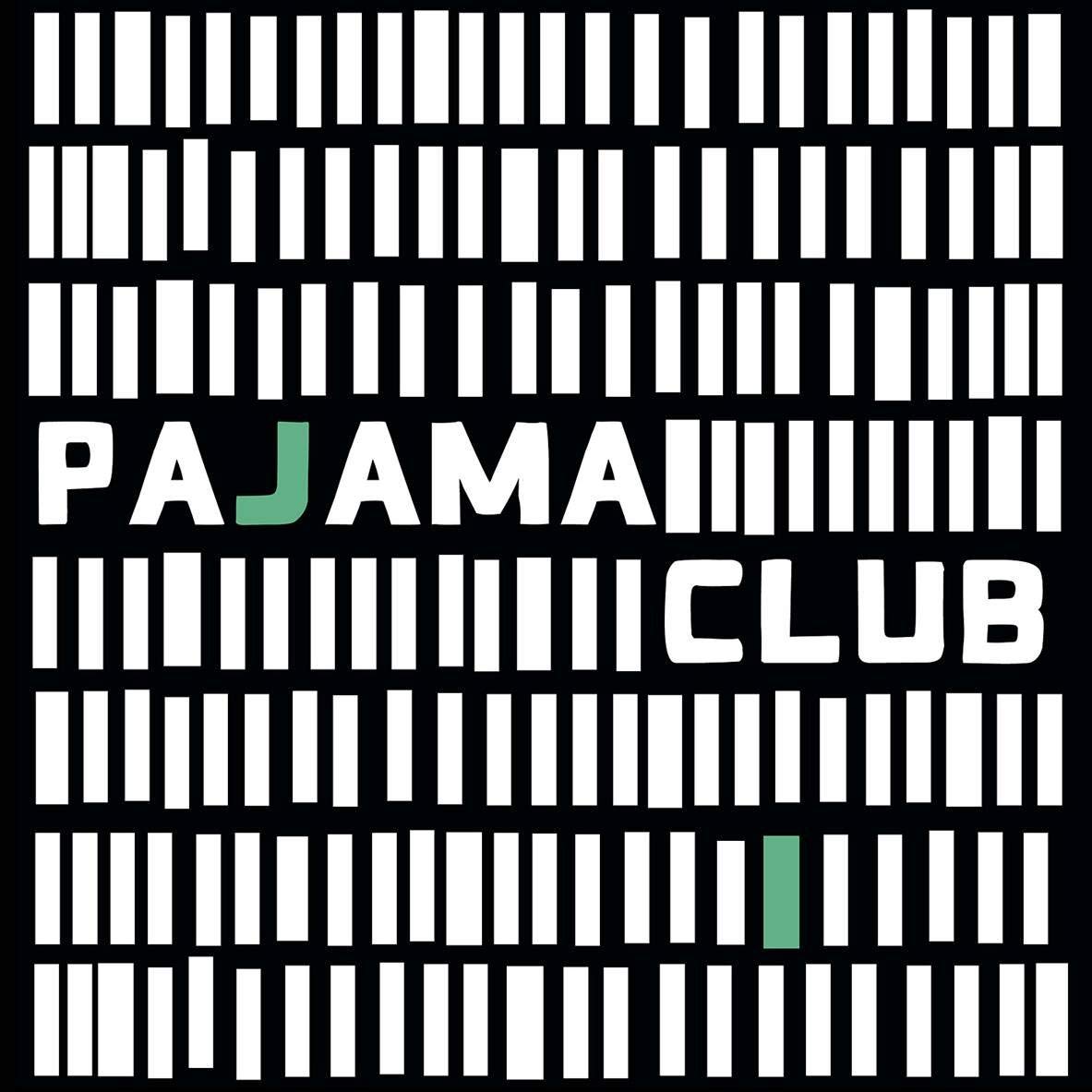
2011, 6/10
After both of their sons left home, Neil Finn and his wife Sharon found themselves with unaccustomed spare time. They started jamming in their music room, with Neil on drums and Sharon on bass, adding Sean Donnelly, who’s recorded enjoyable albums as SJD, on keyboards. The resulting album is markedly different than anything else in Finn’s catalogue- the songs were built from their grooves up, so that the lyrics are largely an afterthought. It’s unusual to hear the studious and mannered Finn singing words like “You’ve got no limit/On your telephone plan.”
The beats set this album apart from Finn’s usual Beatlesque pop. The Finns play funky grooves, inspired by The Bronx’s ESG, and sometimes heading into krautrock motorik territory. The fun beats and SJD’s excellent sonic landscaping are effective on songs like ‘Can’t Put It Down Until It Ends’, ‘These Are Conditions’, and ‘Tell Me What You Want’, with Sharon on lead vocals for the latter. But the tossed off lyrics are distracting at times, and it’s certainly not a major record in Neil Finn’s canon – more of a fun side project.
The different approach of Pajama Club did result in a creative rebirth for Neil Finn, and his ensuing albums have been more adventurous than the predictable music he was making in the first decade of the twenty first century.
Dizzy Heights

2014, 7/10
Neil Finn’s main collaborator on Dizzy Heights is veteran producer Dave Fridmann, known for his work with The Flaming Lips and Mercury Rev. Finn’s always been a song-focused record maker, with straightforward arrangements and productions that emphasise his songs, so the different approach is refreshing. It took me a while to appreciate Dizzy Heights – Fridmann’s psychedelic textures obscure Finn’s songs in a way that isn’t customary. There are pieces like ‘Flying in the Face of Love’ that would work as Crowded House songs, but more atmospheric efforts like ‘Divebomber’ are new territory for Finn.
To Finn’s credit, he succeeds at both approaches – the more traditional Finn fare like ‘Pony Ride’ and the title track are just as enjoyable as the more atmospheric pieces. The falsetto and warlike sound effects of ‘Divebomber’ are perhaps the biggest departure for Finn, but my favourite of the more experimental pieces is the pretty ‘Recluse’. The sparse ‘Lights of New York’, centered around Finn’s piano, anticipates Finn’s next solo project.
The tunes aren’t memorable enough for Dizzy Heights to rank among Finn’s very best work, but the dreamy psychedelia of Dizzy Heights claims new territory for Finn, and it’s generally satisfying.
Out Of Silence
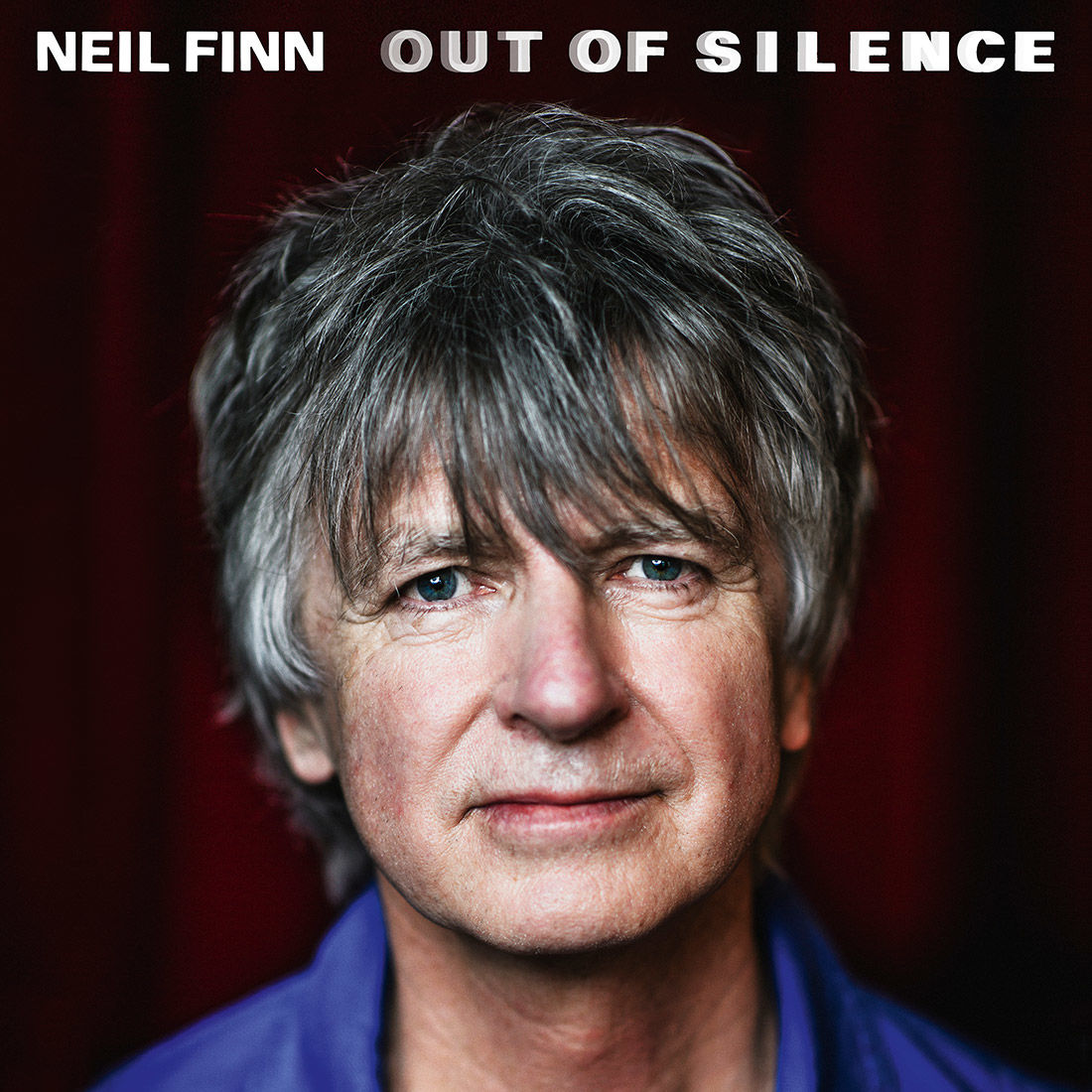
2017, 8.5/10
Out Of The Silence continues Finn’s recent practice of re-contextualising his music in order to challenge himself. It was recorded in a single four hour period; Finn broadcast the weekly practices and the final recording session as live streams. Finn has previously show-cased his talents as a pianist on other projects, like Bic Runga’s Birds and his live album with Paul Kelly, but Out Of Silence is an entire album of piano-based chamber pop, with Finn abandoning his usual guitar and backed by a small orchestra.
Finn’s songs have often revolved around relationships, but Out Of Silence often addresses the uneasy state of the world, with Finn especially pointed on the final chorus to ‘The Law Is Always On Your Side’:
Say the law is always on your side
But I don’t believe it anymore
Cause I heard it all before
And it’s plain to see that the power is above the law
The topical lyrics, the piano, and the lack of studio candy is a different set of components than Finn has ever worked with before, and accordingly Out Of Silence is different in feel than anything he’s done before. It’s noticeably concise, with ten songs tightly packed into its 36 minutes.
While there’s a backing choir of New Zealand music luminaries like Don McGlashan and Lawrence Arabia, Out Of Silence is subdued; a rhythm section only features on ‘Chameleon Days’ and ‘Second Nature’, while Tim Finn guests on ‘Alone’. Standout tracks include the gorgeous, string infused opener ‘Love Is Emotional’, the direct austerity of ‘The Law Is Always On Your Side’, and the insistent pulse of ‘Chameleon Days’.
Out Of Silence is the strongest solo album of Neil Finn’s career, finding new contexts for his dependably beautiful melodies.
Tim Finn Album Reviews
Tim Finn’s released at least nine solo albums, starting with 1983’s Escapade, most of which I’m not familiar with. His solo career is notable for almost never releasing consecutive album on the same record label.
Escapade
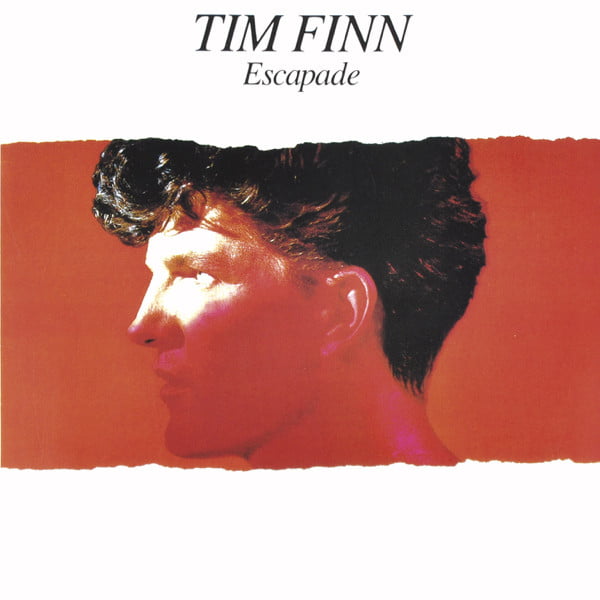
1983, not rated
Tim Finn made his first solo album while still a member of Split Enz. The album was successful in New Zealand (reaching #1) and Australia on the back of the hit single ‘Fraction Too Much Friction’. His main collaborator is former Beach Boys drummer Ricky Fataar, while session pianist Richard Tee also appears.
Big Canoe
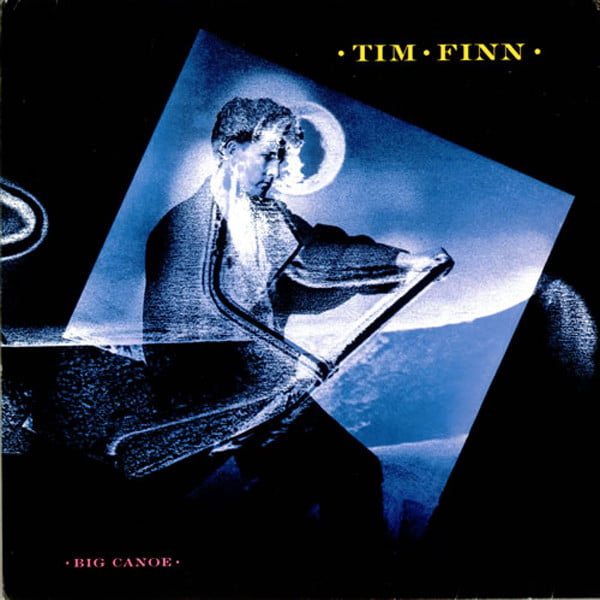
1986, not rated
Finn’s second solo album was successful in New Zealand. It’s notable for featuring former Split Enz member Phil Judd, who hadn’t worked with Finn since 1978 – the Split Enz song ‘I Hope I Never’ is about their messy professional split. I haven’t heard many songs from this record, but ‘Hyacinth’, with Judd on sitar and guitar, is pretty.
Tim Finn

1989, 7/10
Splitting up with actress Greta Scacchi, Finn returned to Melbourne to write and record his third album. Like Crowded House were at the time, he works with producer Mitchell Froom, while the backing musicians look like Peter Gabriel’s supporting cast – Jerry Marotta, Tony Levin, Alex Acuña, and David Rhodes. Tim Finn is front-loaded, but the best material is very good – the breakup anthem ‘How’m I Gonna Sleep’ could easily have been an international adult contemporary hit in 1989.
The opening run of songs is excellent – ‘Young Mountain’ is an atmospheric opener, and ‘Not Even Close’ is another contender for an adult-contemporary hit with its memorable chorus. ‘Parihaka’ skirts close to awkward white reggae, but it works with the ace cast of musicians and the story of Maori passive resistance in the 19th century. The second side is less convincing, although ‘Crescendo’ is a great deep cut, climaxing with Froom’s organ work.
Tim Finn is inconsistent, but it features some great songs that deserved to bring some recognition outside Australasia.
Before & After

1993, 7/10
After serving as a member of Crowded House for 1991’s Woodface, Finn returned to his solo career. He employs a wide array of backing musicians and producers on Before & After. This approach results in a disjointed album – there are some leftover collaborations with Neil, some dance pop, and some folk – with some great moments. It’s a revelation how gorgeous Tim’s voice is when he sings normally, rather than his hiccoughing persona in Split Enz, crooning his way through the lovely ‘In Your Sway’ and showcasing his falsetto in ‘I Found It’.
Opener ‘Hit The Ground Running’ sounds dated, but Finn’s falsetto in the chorus is still gorgeous. ‘In Love With It All’ was inexplicably omitted from Woodface, but is captured here with Ireland’s The Hothouse Flowers, Eddie Rayner, and Neil all contributing. The single ‘Persuasion’ is a charming acoustic song co-written with Richard Thompson, while ‘Many’s The Time (In Dublin)’ finds Tim exploring his Celtic heritage to wonderful effect.
While Before And After isn’t front to back satisfying, the highlights are excellent.
Say It Is So
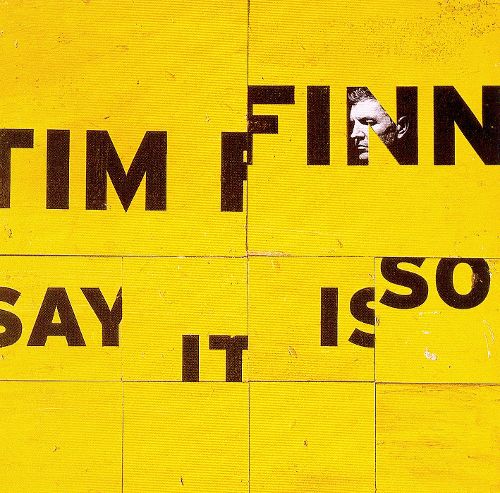
2000, 6.5/10
Tim’s first studio album since Before And After, although he had been working on other projects such as the first Finn Brothers album and ALT, a collaboration with members of the Hothouse Flowers, in the meantime. In the intervening seven years, Tim spent enough time out of the spotlight to the point where he largely ceased to be a commercial musical force, and this album was self-released on his own record label. Approaching fifty (it’s easy to remember his birth year, since he announces it in the lyrics of Time and Tide‘s ‘Haul Away’) Finn at this point is getting to the stage where he’s growing old gracefully, rather than attempting another commercial pop record like Before And After. Say It Is So was recorded in Nashville, largely because Tim’s appreciation of alt-country in general, and Wilco in particular; it’s not a coincidence that then Wilco drummer Ken Coomer is one of the sidemen. Julie Miller also lends her beautiful voice to several of the tracks, contrasting with Tim’s more gravelly tones. Tim’s voice, still a gorgeous instrument on his previous solo album, has aged significantly in the intervening seven years. It’s still pleasant, but doesn’t soar like previously, using lower ranges and more roughness.
There are some standout tracks; ‘Twinkle’ marries a gorgeous melody to a smooth modern arrangement, that’s almost akin to trip-hop. The closing ‘Rest’ is gently anthemic, with a hint of Maori influence in the melody, evident even before the Maori lyrics come in, like a less bombastic ‘Together Alone’, featuring some gorgeous guitar tone. ‘Death Of A Popular Song’ is not as exciting as its title implies. Not all of the songs are particularly exciting either, with predictable fare like ‘Need To Be Right’, and mundane songs like ‘Good Together’ and ‘Some Dumb Reason’ (which justifies its uber-conventional lyrics with the lines “It’s hard to keep it off the record when you feel this way”).
Say It Is So is solid enough most of the way through, and it’s perfectly respectable without pandering to popular trends or falling into sentimentality, but it’s hard to imagine anyone outside Tim’s loyal fan base becoming too excited by it.
Back to New Zealand album reviews…
Related Pages
About
Aphoristic Album Reviews is almost entirely written by one person. It features album reviews and blog posts across a growing spectrum of popular music.
Review Pages
Read about the discographies of musical acts from the 1960s to the present day. Browse this site's review archives or enjoy these random selections:
Blog Posts
I add new blog posts to this website every week. Browse the archives or enjoy these random selections:





